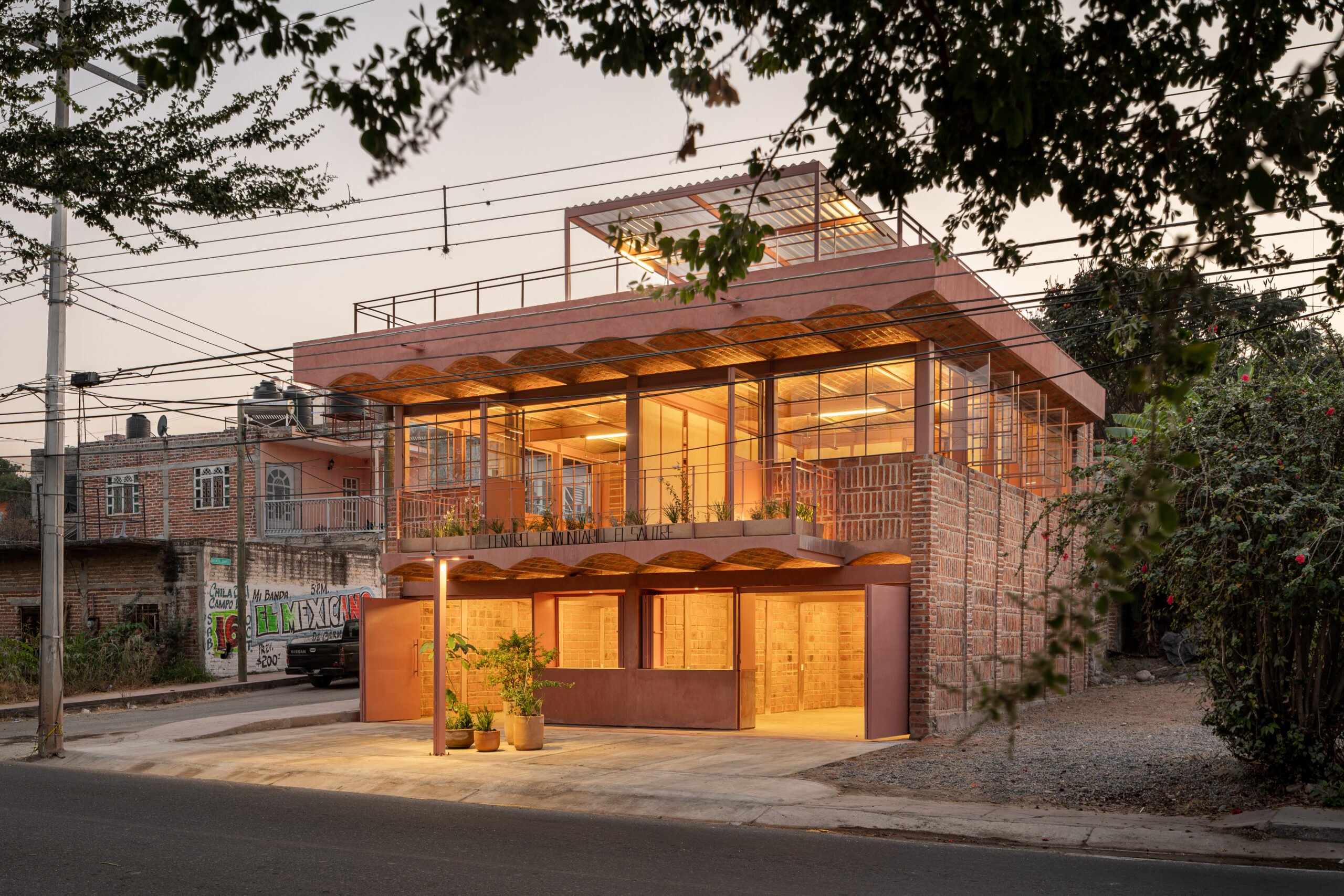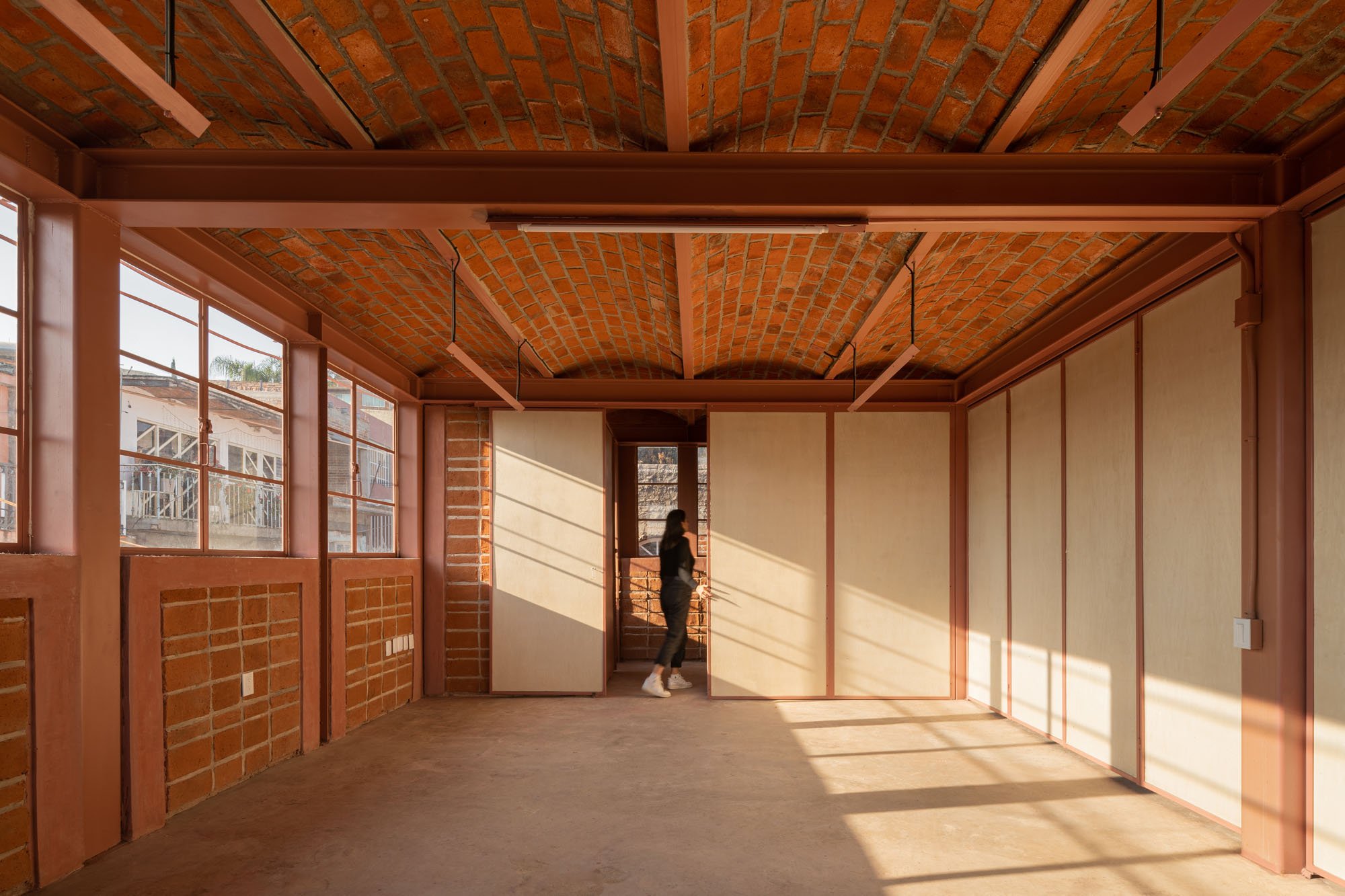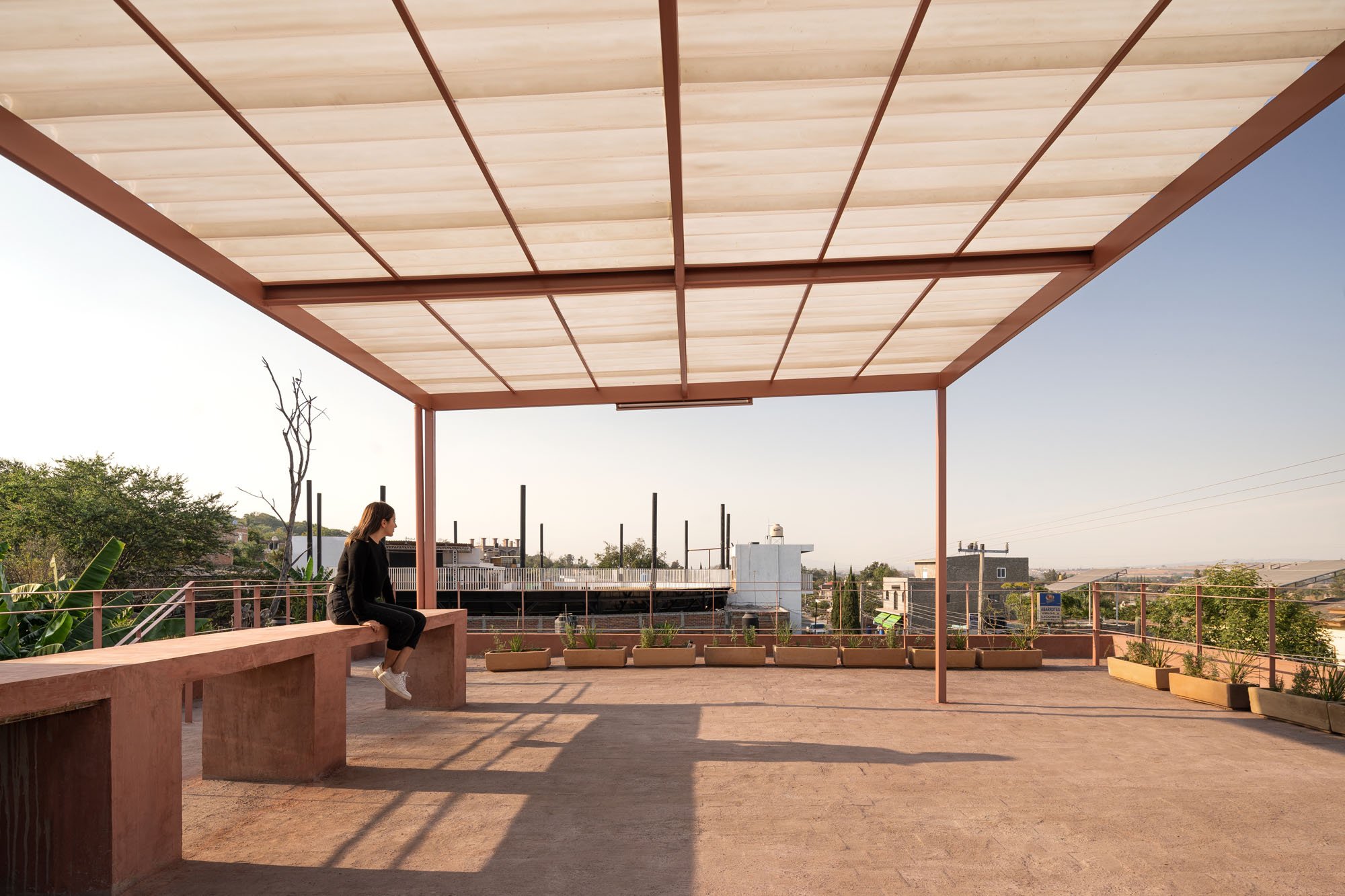
November 16, 2022
The El Salitre Center was Built by and for the Community


The story begins a few years ago, when a local gas company decided to donate a building to communities that had been impacted by a pipeline project. In 2019, the company contracted OVT to design a building on a corner site in Zapotlanejo, and the firm set out to understand the brief by setting up a series of workshops with the community. At first, people thought the architects were part of the gas company, so they were reluctant to participate. “Maybe two people showed up,” the studio’s founder, Omar Vergara, recalls of the first workshop. But slowly, people warmed up to the idea, and both parties defined the program together.
The first floor has room for two local businesses to set up shop (it is now occupied by a Mexican restaurant and a store.) The second floor is flexible enough to accommodate two kinds of classes simultaneously, and serves as a flexible room—part workspace, part gathering space—for a group of local craftswomen. A roof terrace houses Carne Asada parties and other events.

To help the building sing beyond its modest program, Vergara relied on locally sourced bricks, a touch of pink concrete, and the aforementioned Catalan vaults. The architects opted for double brick wall construction to keep the building cooler in the hot summer months. Meanwhile, the Catalan vaults, which aren’t structural by definition, were reinforced so the building could resist earthquakes. “It was important to show the community how to make it structural,” says Vergara, so they could learn the skill and replicate it on future projects. Upstairs, the space is bright and airy thanks to a light metal structure. A row of moving plywood panels bisects the room, providing the adaptable space the community had asked for.
Like any mindfully designed building, the community center’s aesthetic was informed by the kinds of materials that were available nearby, or 300 yards away, to be more specific. During an early visit, the architects noticed a small brick factory near the site and quickly decided to involve the business in the making of the building. Meanwhile, the food vendor next door, who now runs the restaurant inside the community center, became the building’s project manager. “Part of the challenge was to create more impact in the community, so they have to relate with the building,” says Vergara. “The building is beautiful but the thing that’s really beautiful is all behind the scenes.”
Would you like to comment on this article? Send your thoughts to: [email protected]
Latest
Viewpoints
Google’s Ivy Ross Makes Sense of Color
METROPOLIS sits down with Ivy Ross, Google’s vice president of hardware design, to discuss Making Sense of Color, now on view during Salone del Mobile 2024.
Viewpoints
Two Sustainability News Updates for Q2 2024
The building industry makes vital moves toward standardization and transparency on energy efficiency and social impact.
Viewpoints
How the Design Industry Is Navigating the Sustainability Surge
Discover new ThinkLab research that suggests sustainable design is hitting its stride.









